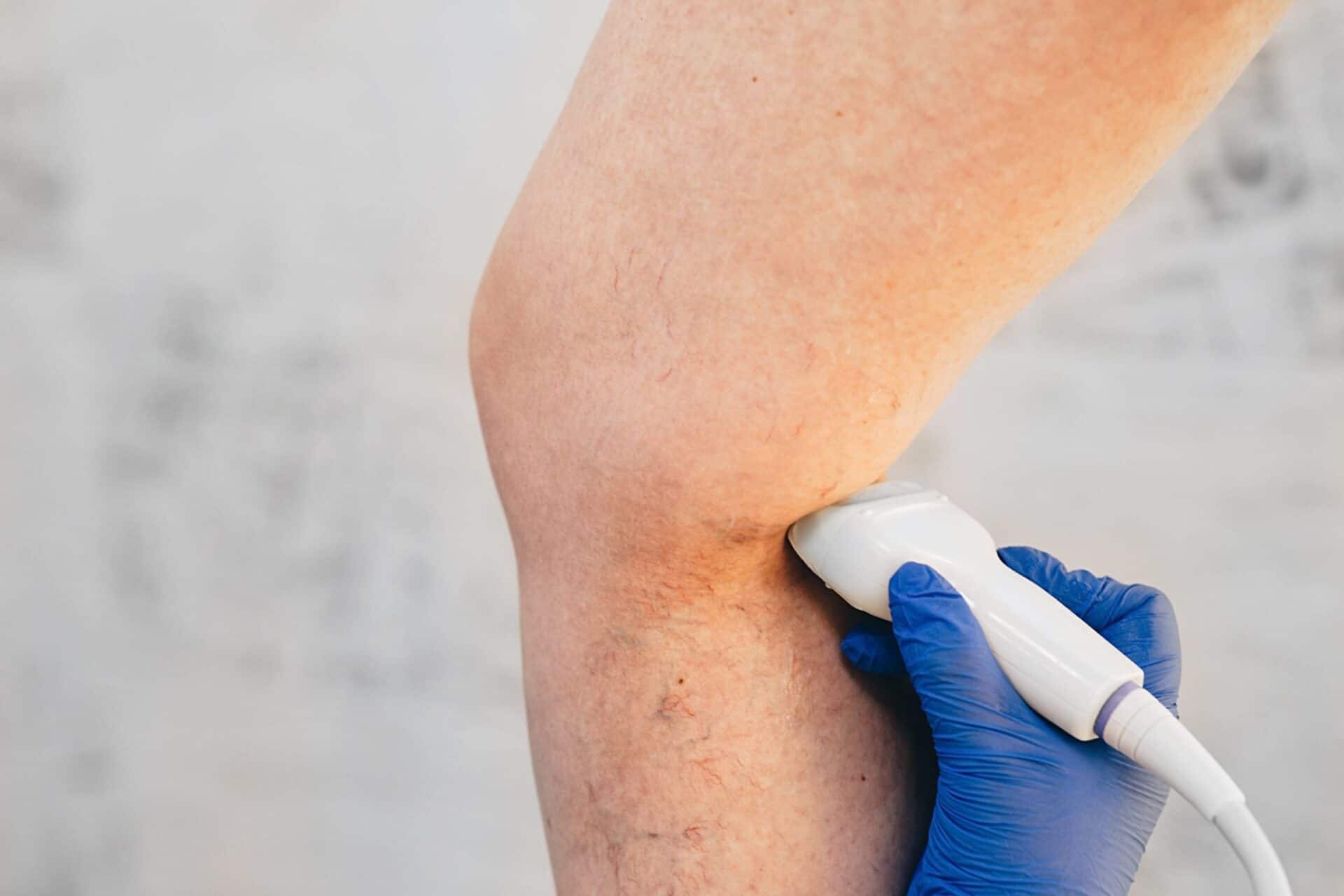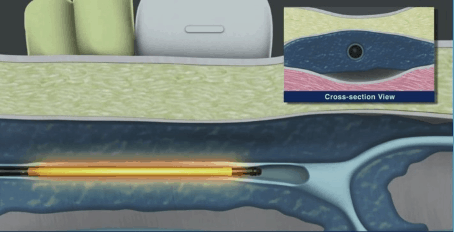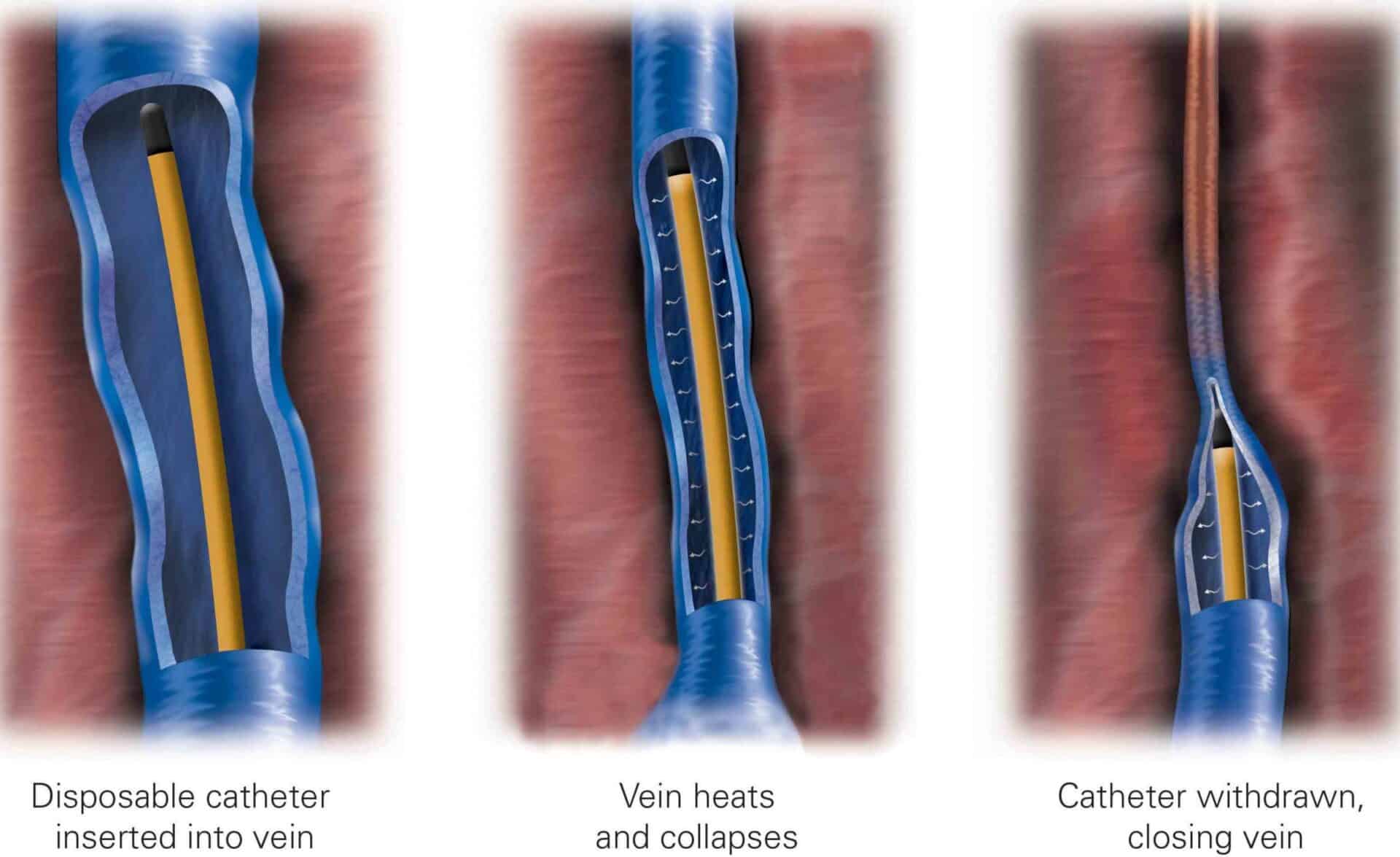
Endovenous Ablation is considered a minimally invasive procedure to remove non-functioning Saphenous veins that are often the cause of the signs and symptoms of Chronic Venous Insufficiency (CVI). The Saphenous Veins are usually not visible and are only imaged by duplex ultrasound examination. Most visible varicose veins are branches or tributaries of the Saphenous Veins. Endovenous Ablation involves the removal of unwanted, non-functioning Saphenous Veins by using thermal energy (heat) to denature the vein, sealing it closed and resulting in its eventual absorption by the body.
How is Endovenous Ablation Performed?
The procedure involves the placement of a narrow catheter inside the enlarged, non-functioning vein under duplex ultrasound guidance, which ensures precise targeting of the abnormal segment of the vein. Once in its proper position, the catheter heats the surrounding vein.


After the vein has been heated, the catheter is removed. During the subsequent weeks, the body absorbs the denatured vein so that it is no longer a source of increased venous pressure in the leg and its associated risks.
Is Sclerotherapy an alternative to Endovenous Ablation?
Usually not. The Saphenous Veins that are targeted by Endovenous Ablation are usually too large to treat by Sclerotherapy. Sclerotherapy is used to treat visible (protruding, tortuous) Varicose Veins, most of which are branches or tributaries of the Saphenous Veins.
Are there any limitations after treatment?
Immediately after Endovenous Ablation, almost all activities may be resumed. It is necessary to wear a compression stocking on the leg for at least two weeks after treatment.
What can I expect after treatment?
There is often some swelling, bruising, and tenderness along the course of the vein. These signs and symptoms resolve in the ensuing days or weeks. In addition, sometimes there may be numbness along the course of the vein; this can take weeks to months, or longer, to improve.
After Endovenous Ablation will my Varicose Veins be gone?
Usually not but they may appear less prominent. Endovenous Ablation is reserved for the treatment of the Saphenous veins. The Saphenous Veins are usually not visible and are examined through duplex ultrasound examination. However, because most prominent, visible, and palpable Varicose Veins are branches of the Saphenous Veins, after Endovenous Ablation they may be less prominent. Varicose Veins that remain after Endovenous Ablation can then be treated by Sclerotherapy.
Does insurance cover this treatment?
Usually, if demonstrable and symptomatic Saphenous Vein insufficiency is present, most health insurance carriers, including Medicare, consider treatment necessary and cover this treatment.
View an Animation of the Endovenous Ablation Procedure by clicking on the video to the right
OUR OFFICE IS COMPLIANT WITH THE CURRENT MARYLAND REGULATIONS INCLUDING: 10.32.09: Delegation and Assignment of Performance of Cosmetic Medical Procedures and Use of Cosmetic Medical Devices. This is a Maryland safety regulation that governs who can legally perform medical cosmetic procedures. Dr. Green administers all injectable treatments (including Botox™, Juvederm™, Voluma™, Kybella™, and other fillers & Sclerotherapy) and laser treatments.
Sign up for monthly promotions and office updates!
By submitting this form, you are consenting to receive marketing emails from: David Green M.D. and LaserDerm & Vein Centers of Maryland, 4800 Montgomery Lane L50, Bethesda, MD, 20814, US, http://www.laserderm.net. You can revoke your consent to receive emails at any time by using the SafeUnsubscribe® link, found at the bottom of every email. Emails are serviced by Constant Contact.
Have Questions & Want More Information?
- Copyright © 2024 LaserDerm Vein Centers of Maryland
- Web Development by NavaWeb
